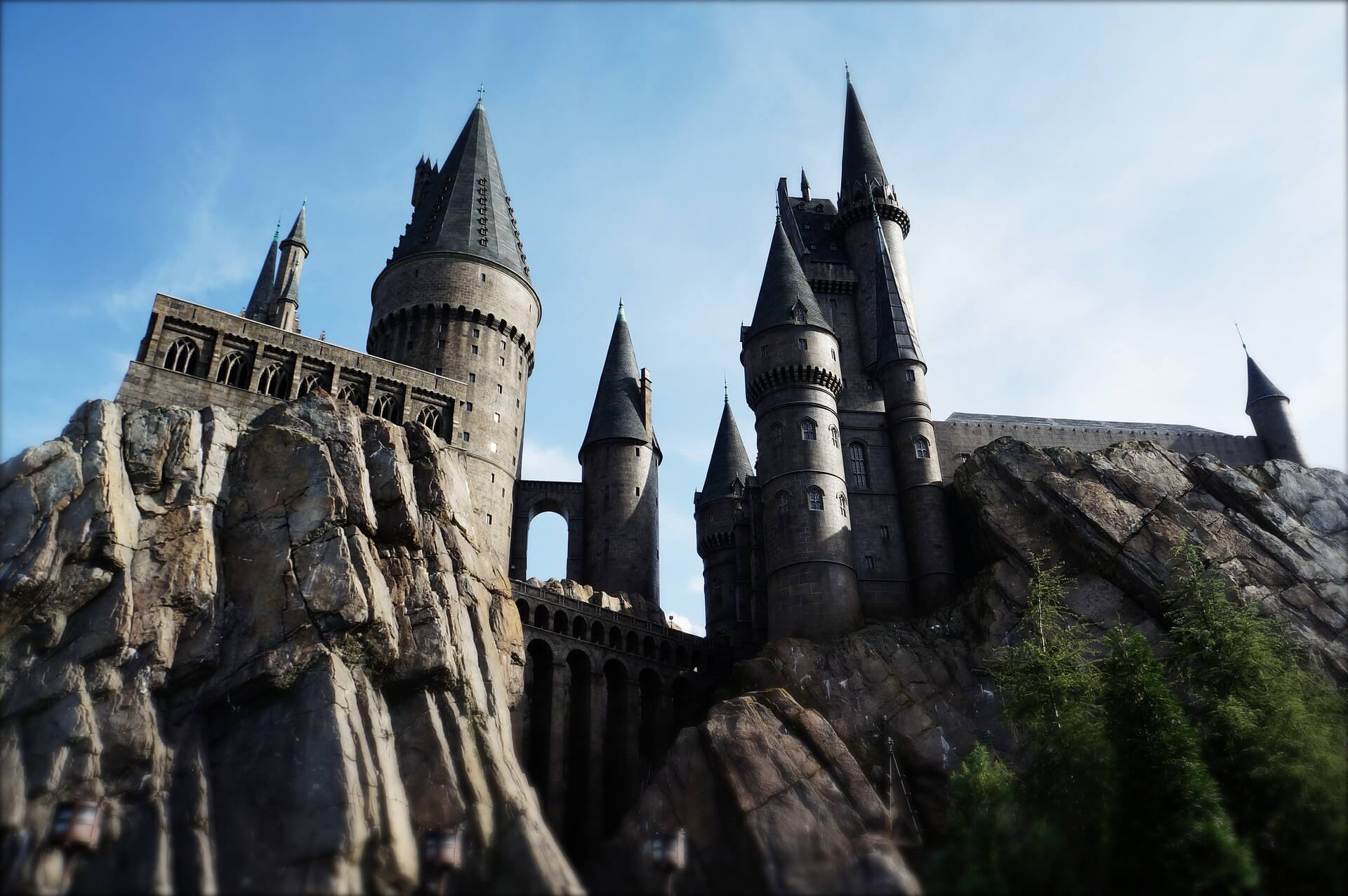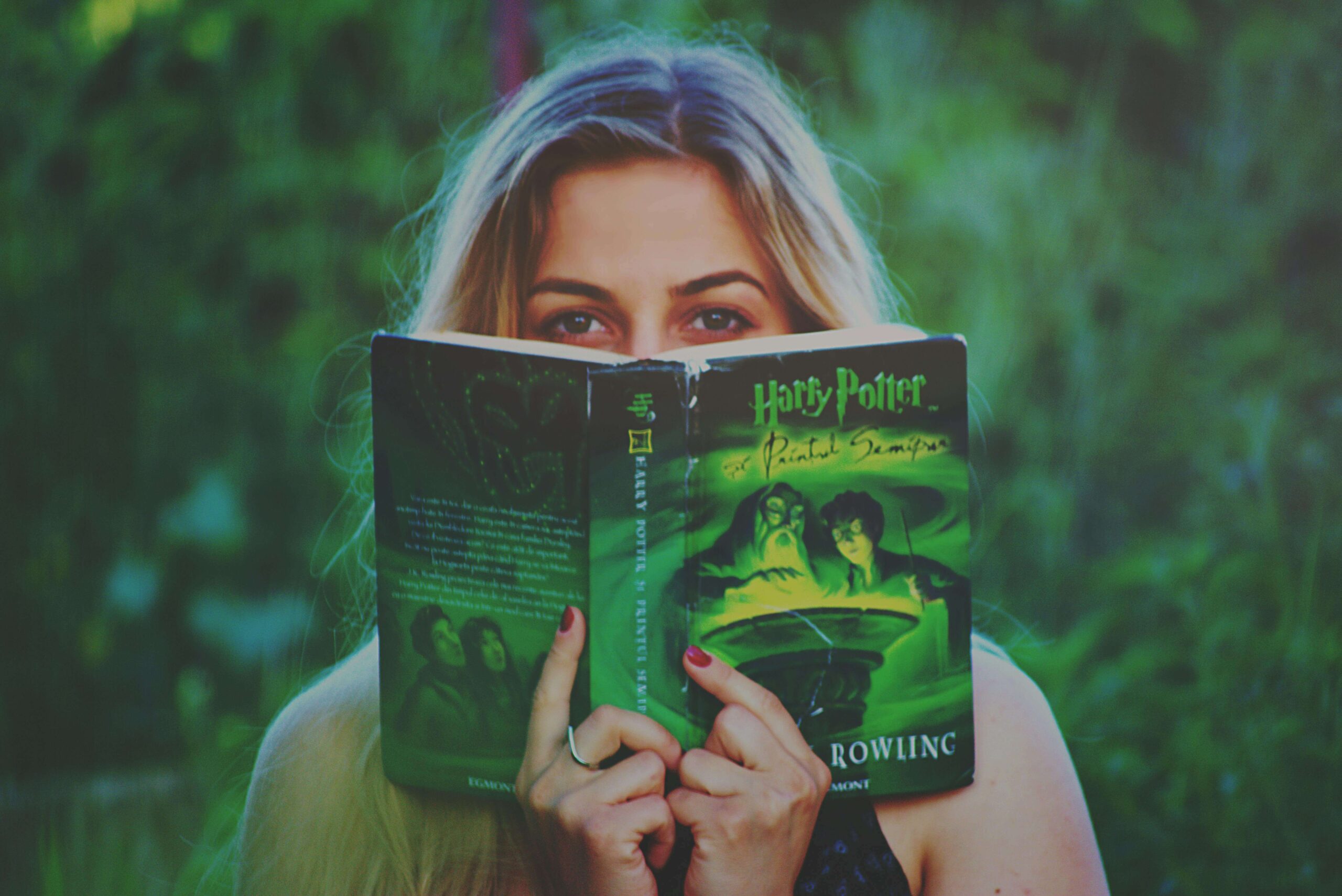
The Harry Potter series has enchanted readers, moviegoers, and even academic scholars since the first book hit shelves in 1997.
Over 500 million copies of the Harry Potter books have been sold worldwide, and the franchise has been translated into more than 80 languages, a staggering reach for a story that began on the back of a napkin during a delayed train ride.
If you’ve ever found yourself lost in the halls of Hogwarts, arguing over which House you truly belong to, or catching yourself whispering Lumos when your phone flashlight won’t turn on, then you know the spell this series can cast.
It’s a story that grew up with its readers, stitched itself into pop culture, sparked university-level discourse, and built a multi-billion dollar wizarding world that still attracts millions of fans every year.
But the rise of Harry Potter didn’t come out of thin air, or a wand. It came through rejection, risk, imagination, and timing. So, how exactly did a single book about a lonely boy under the stairs evolve into one of the most powerful literary empires of all time?
Let’s dig into J.K. Rowling’s uphill climb, the hidden magic tucked between the lines, and how the series carved a permanent mark in both literature and life.
What Is the Harry Potter Series About?
The series follows Harry Potter, a young orphan who discovers on his 11th birthday that he’s a wizard. Up until then, he’s been stuck living in a cupboard under the stairs, bullied by his relatives and unaware that he’s anything but ordinary.
But everything changes when he gets that letter, the one with the green ink and the wax seal. He enrolls at Hogwarts School of Witchcraft and Wizardry, where moving staircases, talking portraits, and enchanted feasts become his new normal.
At Hogwarts, he finds more than just magical education. He finds lifelong friends like Ron and Hermione, mentors who shape him, and enemies who challenge him at every turn.
As he uncovers hidden truths about his parents and his connection to the dark wizard Voldemort, you start to realize this isn’t only about spells and potions. It’s about survival, sacrifice, and standing your ground even when you’re terrified.
The seven Harry Potter books span his years at Hogwarts, and each one grows deeper in tone and richer in emotional weight. What starts off as a whimsical adventure with chocolate frogs and invisibility cloaks turns into a layered narrative about identity, courage, love, and the corrupting nature of power.
By the time you reach the final chapter, you’ve watched not just Harry, but an entire generation grow up, fight back, and figure out who they really are.
J.K. Rowling: The Woman Behind the Wand
J.K. Rowling, born Joanne Rowling, was living in Edinburgh as a single mother, struggling with depression and financial hardship when she began writing Harry Potter.
At the time, she was surviving off state benefits, scribbling notes in cafes while her baby daughter slept beside her in a stroller. She had no publishing connections, no agent, and no certainty that anyone would ever read a word she wrote.
The idea for the Harry Potter series came to her during a delayed train ride from Manchester to London. No pen, no notebook. Just a flash of inspiration that wouldn’t let go.
You can walk into nearly any bookstore in the world, say the name “Harry,” and someone will smile because they know exactly what you mean.
She later recalled, “I simply sat and thought, for four hours. And all the details bubbled up in my brain.” Names, spells, plotlines. They all lived in her head long before they ever appeared on a page.
She didn’t just imagine the wizarding world. She built it from emotion, loss, and hard-won hope. Dementors weren’t fictional monsters pulled out of thin air; they were shaped by her real experience with clinical depression.
The Mirror of Erised didn’t appear by accident. It was a manifestation of her grief over losing her mother just before finishing the first book.
When you read about Harry’s loneliness, his fear of being forgotten, or his need to understand where he came from, you’re actually reading a version of Rowling’s own story.
As someone who’s faced my own bouts of uncertainty while trying to write, I always found it deeply comforting that Harry Potter wasn’t created from a perfect life.
It was carved out of chaos. Rowling didn’t just write magic. She wrote pain, and then transformed it into something unforgettable.
The Rejections Before the Rise
Rowling submitted her manuscript to 12 publishers. All of them turned it down, some didn’t even bother to explain why.
One editor reportedly said that children wouldn’t sit through a book that long. Another simply returned it unread. If you’ve ever poured your heart into something and had it tossed aside, you know exactly how brutal that can feel.
But then came Bloomsbury Publishing. The turning point wasn’t a literary critic or a sales executive. It was the CEO’s 8-year-old daughter.
After reading the first chapter, she begged to see what happened next. That one child’s curiosity did what a roomful of professionals couldn’t: it opened the door to the Harry Potter series.
Even then, the odds were tight. Only 500 copies of Harry Potter and the Philosopher’s Stone were printed in the first run, 300 of those went straight to libraries.
The publisher advised Rowling to get a day job because children’s literature “rarely made money.” Now, that same book in first-edition form can sell for over $100,000 at auction.
When I first read about this chapter of her story, it stuck with me, not because it was dramatic, but because it felt familiar. The waiting. The rejection. The tiny flicker of hope that maybe, just maybe, someone out there will see what you see.
That’s what makes this part of the Harry Potter origin story so satisfying. The magic wasn’t discovered by the experts. It was spotted by a kid who couldn’t put it down.
How the Series Matured Over Time
If you re-read the Harry Potter books now, you’ll see how the tone matures with its audience. What begins with chocolate frogs, enchanted ceilings, and secret passageways soon gives way to betrayal, grief, and the weight of responsibility.
Book one feels like stepping into a dream. By book five, you’re neck-deep in government corruption, mental trauma, and watching beloved characters fall one by one.
You start with a boy marveling at moving staircases. A few years later, you’re standing beside that same boy as he digs graves and buries friends.
Rowling once explained this shift as intentional: she wanted her readers to grow with Harry. And it worked. When you’re young, it’s the magic that hooks you.
When you’re older, it’s the realism that guts you. The cruelty of Dolores Umbridge, the silence after Sirius Black falls through the veil, the quiet emptiness after Dobby dies. It hits harder the second time around.
The stakes climb with each chapter. Hogwarts, once a place of safety and laughter, becomes a battleground. Trust is fragile. Truth is buried.
By the final book, you’re no longer reading about a boy with a wand. You’re watching a resistance rise, inch by inch, through loss, fear, and the kind of courage that feels raw and earned.
As someone who read the series as a teen and then again as an adult, I noticed how different parts hit me in completely new ways. What once felt like fantasy started to read like a quiet, brutal guidebook on how to hold on when the world around you starts breaking.
That’s part of what gives the Harry Potter series its staying power: it grows up the way life does—messy, unexpected, and unforgettable.

Secrets Hidden in the Story
Even if you’ve read the Harry Potter books several times, there are subtle details and literary tricks you might have missed, some so cleverly planted, they feel like buried treasure.
- Professor Trelawney’s wild and rambling predictions? Most of them actually come true, especially the ones dismissed as nonsense. From foretelling Voldemort’s return to hinting at Harry’s fate, her cryptic words hit harder on a second or third read.
- Snape’s every insult carries a hidden layer. His jabs at Harry’s arrogance, rule-breaking, and resemblance to his father aren’t just bitterness. They’re rooted in grief, jealousy, and unresolved guilt. Once you know the full story, those lines feel like emotional landmines.
- Names in the Harry Potter series are rarely just names. Remus Lupin, a werewolf, shares a name with the mythological twins raised by wolves. Sirius Black transforms into a dog, and Sirius is the brightest star in the Canis Major constellation, also known as the Dog Star. Even Voldemort, when translated from French, means “flight from death”, a fitting name for someone obsessed with immortality.
- The number 7, long considered the most magical number in wizarding lore, appears everywhere: seven books, seven Horcruxes, seven years at Hogwarts, seven players on a Quidditch team. It’s no accident. It’s structure with meaning.
As a reader, I didn’t catch most of these the first time. I was too caught up in the action, flipping pages to see who would survive or what twist was around the corner.
But when I returned to the series as an adult, these small, sharp details started to jump out. That’s the beauty of Rowling’s writing. It holds up on re-read, quietly rewarding anyone who’s willing to look a little closer.
You start to realize just how much thought was tucked between the lines. It makes the Harry Potter series feel less like a simple story and more like a puzzle you’re still solving years later.
Hollywood and the Hogwarts Express
In 1999, Warner Bros. bought the film rights to the Harry Potter series, and by 2001, the first movie, Harry Potter and the Sorcerer’s Stone, hit theaters. The pressure was enormous.
The books had already become a global sensation, and fans were fiercely protective of Hogwarts and its world. But Rowling made one thing clear: the cast had to be entirely British, and the filming had to stay rooted in the UK.
That wasn’t a trivial demand. It was her way of safeguarding the series’ cultural identity. Hogwarts was never meant to feel like Hollywood; it was steeped in old stone, grey skies, and the kind of magic that feels ancient.
The choice paid off. You could feel it in every detail, from the Scottish landscapes and real British castles to the crisp accents and woolen school uniforms. The films looked and sounded like the books felt.
That tone, especially in the first two movies directed by Chris Columbus, kept the innocence and wonder intact. Then came Alfonso Cuarón with Prisoner of Azkaban, and the tone took a darker, more artistic turn that matched the story’s shift toward adolescence and moral complexity.
The Harry Potter movies grossed over $7.7 billion worldwide, making the franchise one of the highest-grossing in film history. But the number tells only part of the story. What really stuck was the way the films brought new life to the books without rewriting them.
As someone who grew up reading the series and then rushed to the theater for every release, I remember the electric feeling of seeing Diagon Alley for the first time on screen, or hearing John Williams’ iconic theme as the camera panned over the castle.
It wasn’t just about adapting a story. It was about making magic feel real for the millions of us who had only seen it in our heads. That kind of loyalty to the material is rare, and it helped cement the Harry Potter series as something that could be passed down, not just read or watched, but experienced together.
How It Changed the Actors’ Lives
Daniel Radcliffe, Emma Watson, and Rupert Grint went from unknown children to global icons overnight. One minute they were wide-eyed kids auditioning for a fantasy film, and the next they were plastered on billboards, toy boxes, and lunchboxes around the world.
Millions watched them grow up on screen, from sorting hats to battle scars, and that kind of spotlight doesn’t just fade when the cameras stop rolling.
Radcliffe, who was only 11 when he was cast as Harry Potter, later admitted he struggled with alcohol during the height of filming. The pressure to perform, the loss of anonymity, the surreal experience of fame. It took a toll.
This story built a world people don’t want to leave, even decades later.
But in recent years, he’s been vocal about his journey to sobriety and has used his platform to support mental health awareness, especially among young people navigating anxiety and addiction.
Watson, cast as Hermione Granger, embraced the spotlight with a quiet determination. She attended Brown University while still filming and later became a UN Women Goodwill Ambassador.
Her “HeForShe” campaign sparked global conversations about gender equality, and her transition from actress to activist felt like a natural extension of Hermione’s passion for justice.
Grint, who played Ron Weasley, took a different route. He leaned into independent films, quirky roles, and eventually launched his own production company.
He also surprised fans when he joined Instagram in 2020 with a photo of his newborn daughter, instantly breaking a million followers, a reflection of how invested fans still are in their post-Harry Potter lives.
These roles defined their careers, no doubt. But they didn’t define their limits. What stands out most is how each of them took something as massive as the Harry Potter series and turned it into a springboard for something personal.
Watching them step into the spotlight was one thing. Watching them step out of it with purpose. That’s what made it worth following.
From Welfare to Billionaire: The Rowling Effect
J.K. Rowling became the second-richest woman in the UK, at one point even wealthier than the Queen. That’s not hyperbole. It’s documented. She built an empire from a story she once drafted on scraps of paper, all while sitting in Edinburgh cafés with her baby in a stroller.
Her earnings didn’t come from just book sales. The Harry Potter series exploded into a licensing powerhouse, covering everything from movie rights and merchandise to video games, theatrical productions, and theme parks.
Rowling insisted on retaining creative control over the Harry Potter brand, a rare move for a first-time author. But it paid off.
Her hands stayed on everything, from casting decisions to storyline approvals, making her one of the most strategically savvy businesswomen publishing has ever seen. You don’t often hear about writers holding the reins on billion-dollar franchises. Rowling did.
The Wizarding World of Harry Potter theme parks alone rake in hundreds of millions every year. From butterbeer stands to lifesize replicas of Hogwarts, these parks have turned the fantasy into a real-world economy of their own.
And fans, myself included, line up for hours just to ride the Hogwarts Express or walk through Diagon Alley. It’s surreal.
According to Forbes, Rowling has donated over $150 million to various causes, including multiple sclerosis research, literacy programs, and support for single-parent families.
Ironically, that generosity briefly knocked her off the billionaire list. But if that’s the trade-off—less money on paper, more impact in the real world—I’d say she made the right call.
This level of influence started with a story that publishers once thought no one would buy. Now, it’s a global force that continues to earn, inspire, and give back.
That’s the ripple effect of Harry Potter, and the woman who imagined it all from a corner table with nothing but an idea and a stubborn belief that it mattered.
Controversies and Challenges
The Harry Potter series hasn’t been free from criticism. Over the years, scholars, fans, and cultural commentators have pointed out a noticeable lack of racial diversity, along with certain stereotypical characterizations, like the goblins in Gringotts, which some viewed as problematic portrayals.
While the books opened doors for millions of readers worldwide, they’ve also sparked important conversations about who gets represented and how.
The conversation took a sharper turn in recent years when J.K. Rowling made a series of comments about transgender issues that drew significant backlash. For many fans, myself included, it felt like a punch to the gut.
The author who gave us Hogwarts and the themes of love, bravery, and acceptance had now become a divisive figure. It led to an uncomfortable question: can you still love the story if you struggle with the creator behind it?
That question split the fandom in ways few could’ve predicted. Some fans chose to step away entirely, removing their Harry Potter merch, leaving online communities, or refusing to support any future content tied to Rowling’s name.
Others took a different path. They kept the books on their shelves, still found comfort in the characters, and chose to reinterpret the series on their own terms.
The debate hasn’t cooled, especially as new content gets released, from Fantastic Beasts to the upcoming HBO series. People are asking harder questions now, about accountability, legacy, and what it means to grow up with a story that later becomes complicated.
And maybe that’s the most surprising challenge the Harry Potter series has faced: learning to exist in a world that’s still trying to reconcile magic with reality.

Expanding the Wizarding World
The Harry Potter franchise didn’t stop with the books or the films. It kept growing, weaving new branches into the wizarding world that fans still explore today. One of the biggest additions has been the Fantastic Beasts series, which dives into magical history decades before Harry’s birth.
It follows Newt Scamander, a magizoologist with a suitcase full of magical creatures and a habit of stumbling into chaos. The films connect to broader wizarding politics, the rise of Gellert Grindelwald, and even a surprising link to Albus Dumbledore’s past.
While reviews of Fantastic Beasts have been mixed, some fans love the deeper lore, others feel it strays too far from what made the Harry Potter series special, the effort to build out the timeline has opened new possibilities.
You get a look at how the magical world works outside Hogwarts, outside Britain, and in eras where rules and alliances looked very different.
Then there’s Harry Potter and the Cursed Child, a stage play that focuses on Harry’s son, Albus Severus Potter. The story picks up nineteen years after Deathly Hallows, tackling father-son tension, legacy pressure, and a magical time-travel twist that left audiences divided.
Some loved it, some questioned the creative choices, but as someone who saw it in London, I can say the stage effects alone felt like real-life spells. It’s one thing to read magic. It’s another to see it unfold right in front of you.
And most recently, HBO confirmed what many fans had speculated for years: a new Harry Potter TV series is officially on the way. This reboot plans to stay closer to the source material, with each season dedicated to a single book.
For longtime readers, this feels like a chance to experience every detail that never made it to the big screen, like Peeves, Winky, or the full backstories of side characters who shaped the larger world.
As the wizarding world continues to expand, it’s clear the appetite for this universe hasn’t faded.
Whether you’re into prequels, plays, or reboots, there’s something strangely exciting about seeing a story you grew up with stretch its wings a little further. Even now, it feels like there’s more waiting just around the corner.
The Series’ Lasting Legacy
Harry Potter isn’t fading into nostalgia. It’s still showing up in classrooms, in college syllabi, and in conversations between parents and their kids.
Many schools continue to use the Harry Potter books for literacy programs, not just because they get kids reading, but because they get kids thinking.
The themes are complex enough to spark real dialogue about identity, morality, and even grief, all wrapped in a story that’s still incredibly readable.
In the academic world, scholarly journals regularly publish essays unpacking its layers, from the religious symbolism woven through the final book to the character development arcs that mirror classical hero myths.
Some dive deep into political allegory, comparing the Ministry of Magic to real-world systems of power and surveillance. It’s the kind of analysis usually reserved for Shakespeare or Orwell, but here we are, doing the same with a boy wizard and a lightning bolt scar.
And yes, fans are still lining up at Universal Studios to sip butterbeer, explore Hogsmeade, and wave interactive wands at storefront windows.
I went with a friend a few years ago, and watching grown adults tear up while walking through the replica of Hogwarts felt oddly moving. This story built a world people don’t want to leave, even decades later.
This is more than a story. It’s a part of cultural history. If you grew up with it like I did, it likely shaped the way you see friendship, sacrifice, and resilience. You probably looked at injustice differently after reading about house-elf liberation or student-led rebellions.
That’s the kind of impact most books dream of making. And somehow, Harry Potter did it with a trolley cart full of chocolate frogs, a hidden platform, and a story that continues to grow with you.
Why Harry Potter Still Matters
I’ve read the Harry Potter books, watched the movies more times than I can count, wandered through Hogwarts at the theme parks, and even written about how the series influenced the way I tell stories.
And if there’s one thing I’ve come to believe, it’s this: Harry Potter made people care about books again.
Before the series, it was rare to see kids lugging around 700-page novels with torn covers and dog-eared pages. Suddenly, entire classrooms were racing to finish the next chapter.
Midnight book releases became global events, and libraries had waitlists longer than the books themselves. It reminded people that stories still mattered, and that they could connect us in ways nothing else could.
You start with a boy marveling at moving staircases. A few years later, you’re standing beside that same boy as he digs graves and buries friends.
It also hit deeper for adults. Readers weren’t just watching Harry face external threats; they were recognizing their own childhood fears, their family scars, and their private losses in his journey.
I’ve spoken to friends who said Order of the Phoenix helped them name their anxiety. Others saw their grief reflected in Harry’s longing for his parents. That kind of emotional connection doesn’t fade. It stays with you.
The Harry Potter series built a global community before we had hashtags or group chats. People bonded over theories, house alignments, and character arcs.
They wrote fanfiction, crafted wands, created art, and passed the books down to their kids. You can walk into nearly any bookstore in the world, say the name “Harry,” and someone will smile because they know exactly what you mean.
It’s not about spells or potions. It’s about love, the kind that protects. Purpose, the kind that pulls you out of bed even when the world feels heavy. And courage, the kind that stands up in the dark with trembling hands and says, “No. Not this time.”
That message will always matter.
And that’s why Harry Potter will never truly leave us, because it’s already inside us, stitched into the way we see the world, and how we choose to walk through it.




